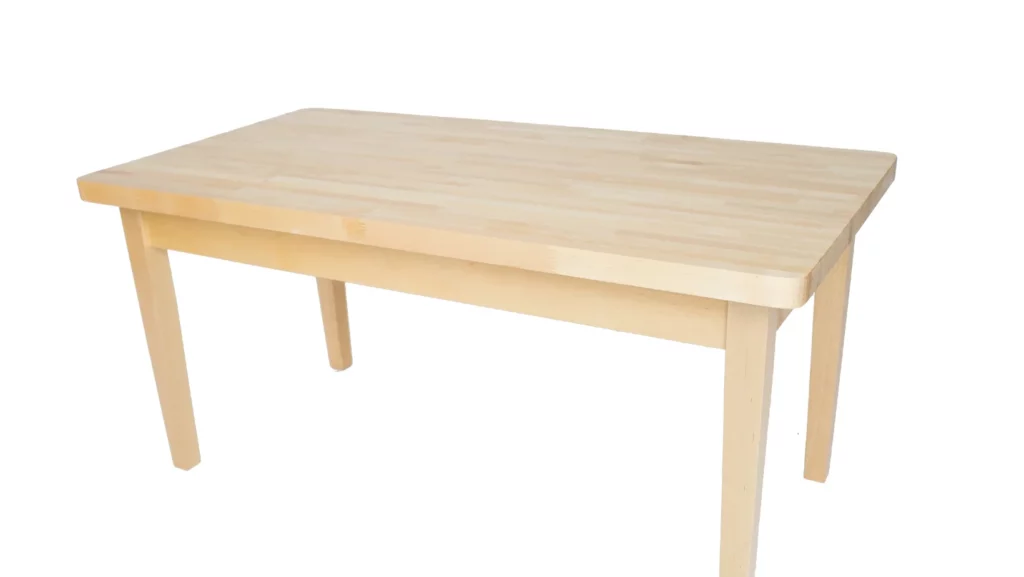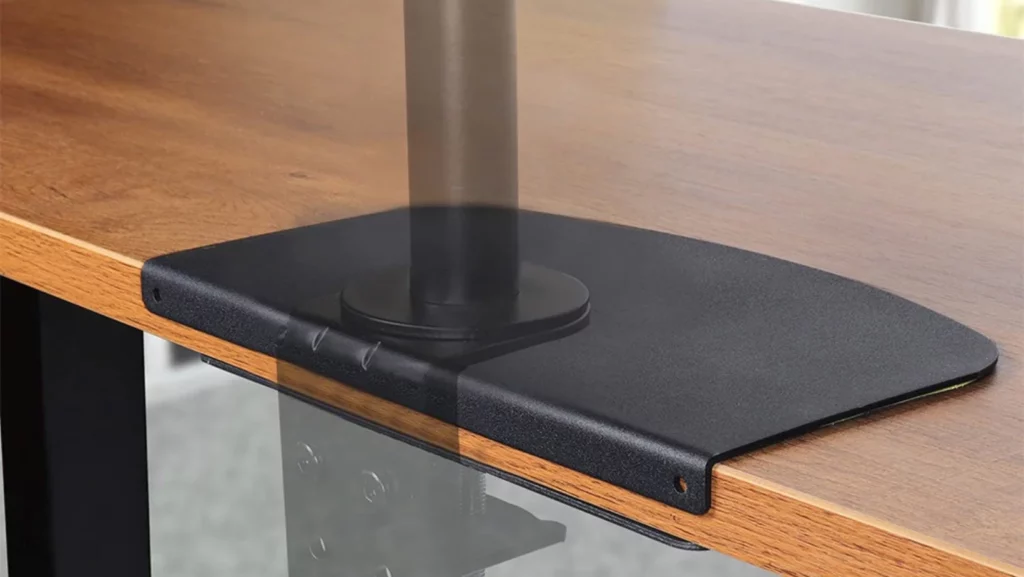Suppose you’ve been considering a monitor arm. In that case, you’re likely already aware of the many benefits the arms free up valuable desk space. Still, they also make it easier to customize your workspace for an ergonomically optimal view and help improve posture – all important considerations for staying productive and comfortable. One common question that is asked, however, in this context is whether or not monitor arms can cause damage to desks or furniture surfaces.
In this article, we will explore the answer to that question by looking at potential reasons why your desk might be damaged and solutions for avoiding further issues.
Are you worried About your Desk being damaged by the Monitor’s arms?
You’ve heard the rumors about monitors damaging desks, but are they true? Monitor Arms Guide has the answers. Our experts have extensively researched and tested to provide reliable advice on preventing your desk from being damaged using monitor arms. We can even show you some great solutions to keep you and your desk safe!
Stop worrying over the extensively researched and tested monitors – get informed with Monitor Arms Guide’s articles to ensure you and your furniture stay in top shape! With our expert-tested recommendations for avoiding possible damages and detailed examples of how it works, we’re sure we have a solution for you.
What Causes Monitor Arms to Damage Desks

These are the common reasons why monitor arms might cause damage to desks:
1. If the Desk Tabletop is Too Thin
The first and foremost reason the desk gets damaged by the monitor arm is that the desk tabletop may be too thin. Monitor arms accommodate a variety of weights, but if your table is too thin or lightweight, it won’t be able to support the monitor’s weight. As a result, this could lead to cracks in the surface or even cause it to break apart if you ever try to adjust the arm.
So, Make sure that your desk is robust enough. A good rule of thumb is to look for a table with a thickness of at least 1-1/2 inches. You should also check the weight capacity of your monitor arm before making any purchases to ensure it is compatible with the desk you are using.
2. If the Mounting System is Too Heavy for a Tabletop
The second reason a monitor arm damages the desk is the weight of the mounting system. If your mounting system is too heavy for a tabletop, it can cause the desk to bow or even break apart. This is especially true when using monitor arms with clamping systems which require larger screws and bolts.
Meaning it is designed to accommodate heavier loads. Desks with thicker tabletops and reinforced frames will be better equipped to handle the weight of your monitors and mounting system.
3. If the Desktop has a Hollow Core Nature

They can’t handle the weight of heavier items. This is also true for monitor arms and their mounting systems. If your desk has a hollow core, it could warp or break apart due to the excess weight.
To avoid this issue, it’s best to invest in a desk with a solid surface, such as plywood or particleboard is best investing in a desk. This will help ensure that your desk is better equipped to handle the weight of your monitors and mounting system.
4. If the Tabletop is made of Glass Material
The glass tabletop has a minimal load-bearing capacity, making it impossible to use a monitor arm. As a result, the glass surface could crack or break if you try to mount your monitors with an arm system.
Investing in a desk with a solid surface instead of glass is highly recommended if you’re interested in using a monitor arm.
Monitor Arm Installation: 6 Best Practices
If you want to install a monitor arm on your desk, follow some basic guidelines to ensure it is done safely and without damaging the surface.
1. Make Sure about the Desktop Thickness
The desktop thickness is the first to you should consider before buying a monitor arm. Make sure that its thickness is at least 1-1/2 inches to support the weight of your monitors and mounting system.
By doing this, you can avoid any potential damage that could occur due to the excessive weight of the monitors and mounting system.
2. Make Sure the Clamp Fastening is Snug
Ensure the mounting system type that the clamp fastening is snug so that it won’t slip and cause any damage to the desk. This can be done by adjusting the screws or bolts, depending on your mounting system type.
By ensuring the clamp fastening is snug, you can ensure the monitor arm won’t slip and cause any damage to your desk.
3. Be Sure About the Weight Distribution
Monitors are heavy and need to be distributed evenly. Be sure that the weight of the monitor arm is evenly distributed across both sides and that it’s not too tight so it can move without any resistance.
Best unnecessary best pressure from being placed on one part of the desk.
4. Use Steel Reinforcement Plate

For a more secure installation, a steel reinforcement plate with a mounting system is best to support accidental support slips or falls.
Using a steel reinforcement plate can also provide extra rigidity so that your desk won’t bow or break under the pressure of the monitors and mounting system. This reinforcement plate will help reduce the distortion of the mounting part and prevent your desktop from being damaged or scratched.
5. Use Grommet Mounting Instead of a C-clamp
Another way to reduce the chance of damaging your desk is to use a grommet mounting system instead of C-clamps. This will support both sides of the desktop, allowing it to handle more weight without damaging its surface or structure.
Grommet mounting can also help prevent accidental slips and falls since it provides extra security when you adjust your monitor arm.
6. Avoid Mounting the Monitor Arms on Glass Top Desks
As mentioned, glass desktops are not designed to handle the weight of a monitor arm and its mounting system. This could lead to cracks on the surface or even break apart if you try to adjust the arm.
So, it’s best to avoid using a monitor arm on a glass desktop unless you can better handle the weight of your monitors and mounting system. Get the most out of your investment with the right care and maintenance.
Frequently Asked Questions About Can Monitor Arms Damage a Desk? Reasons and Solutions Explained
Q: What types of desks can I mount a monitor arm on?
A: You can safely mount a monitor arm at least 1-1/2 inches thick on any desk with a solid surface, such as plywood or particleboard. Check the weight capacity of your monitor arm before making any purchases to ensure it is compatible with the desk you are using.
Q: Is a grommet mounting better than a C-clamp?
A: Yes, using a grommet mounting system is the best option for reducing the chance of damaging your desk. It provides extra security when you adjust your monitor arm and can help prevent accidental slips or falls due to excessive weight.
Q: Can I use a monitor arm on my glass-top desk?
A: No, using a monitor arm on a glass desktop is not recommended, as it cannot handle the weight of your monitors and mounting system. This could lead to cracks or even break apart if you try to adjust the arm.
Conclusion
Monitor arms can damage desks depending on their design and weight, but there are various ways to prevent this. For starters, the height of your desk relative to the monitor arm should be considered, as well as purchasing high-quality monitor arms that are designed with the right amount of tension and have anti-fatigue features.
Furthermore, when you need to adjust the monitor arm height, always try not to pull or force it in various directions since these movements can be strenuous, and instead, use a smooth motion when making adjustments.
Overall, understanding what is needed in size and weight for your desk is key to ensuring it is secure with your chosen monitor arm setup. If you are still unsure after exploring these steps to mount your monitor arm safely – our Monitor Arms Guide is here to help!

